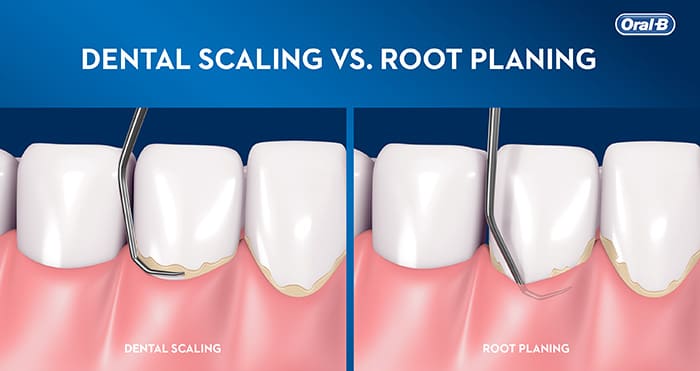
Introduction
When it comes to maintaining good oral health, regular dental cleanings and proper oral hygiene practices are essential. However, in some cases, a more intensive treatment called scaling and root planing may be necessary. This procedure is often recommended for individuals with gum disease or those at risk of developing it. In this blog post, we will explore what scaling and root planing entail, why they are important, and how they can save your smile.
What is Scaling and Root Planing?
Scaling and root planing is a non-surgical dental procedure that is performed to treat gum disease. It involves the removal of plaque and tartar from the teeth and the smoothing of the tooth roots to promote gum tissue healing. This procedure is also known as deep cleaning and is usually performed by a dental hygienist or a periodontist.
The Importance of Scaling and Root Planing
Gum disease, also known as periodontal disease, is a common oral health problem that affects millions of people worldwide. If left untreated, gum disease can lead to tooth loss and other serious health complications. Scaling and root planing play a crucial role in the treatment and prevention of gum disease.
1. Removing Plaque and Tartar
Plaque is a sticky film that forms on the teeth and contains bacteria. If not removed regularly, plaque can harden and turn into tartar, which cannot be removed by regular brushing and flossing. Scaling and root planing effectively remove plaque and tartar from the teeth, reducing the risk of gum disease.
2. Reducing Gum Inflammation
Gum disease causes inflammation of the gum tissue, leading to symptoms such as redness, swelling, and bleeding. Scaling and root planing help to reduce gum inflammation by removing the bacteria and toxins that contribute to the disease.
3. Preventing Tooth Loss
As gum disease progresses, it can cause the gums to pull away from the teeth, creating pockets where bacteria can thrive. These bacteria can attack the supporting structures of the teeth, leading to tooth loss. Scaling and root planing help to prevent tooth loss by removing the bacteria and promoting gum tissue healing.
The Scaling and Root Planing Procedure
The scaling and root planing procedure is typically performed in two or more visits, depending on the severity of the gum disease. Here is an overview of the procedure:
1. Examination and Assessment
Before the procedure, the dentist or periodontist will examine your teeth and gums to determine the extent of the gum disease.
Summary
Scaling and root planing are dental procedures that focus on deep cleaning the teeth and gums to treat gum disease and prevent further damage. Scaling involves the removal of plaque and tartar buildup from the tooth surfaces, both above and below the gumline. This is typically done using specialized dental instruments. Root planing, on the other hand, smooths out the rough surfaces of the tooth roots to discourage the accumulation of bacteria and promote gum reattachment.

Gum disease, also known as periodontal disease, is a common condition caused by bacterial infection and inflammation of the gums. If left untreated, it can lead to tooth loss and other serious oral health problems. Scaling and root planing are effective in combating gum disease by removing the bacteria and toxins that contribute to its progression.
During the scaling and root planing procedure, your dentist or dental hygienist will carefully clean the pockets between your teeth and gums, removing any plaque, tartar, and bacteria. This deep cleaning process helps to eliminate infection and reduce inflammation, allowing the gums to heal and reattach to the teeth properly.
Scaling and root planing can be performed using local anesthesia to ensure your comfort throughout the procedure. Depending on the severity of your gum disease, the treatment may be completed in one or multiple visits. After the procedure, it is crucial to maintain good oral hygiene practices and attend regular dental check-ups to prevent the recurrence of gum disea you can look here se.
In conclusion, scaling and root planing are vital dental procedures that can save your smile by effectively treating gum disease.
- Q: What is scaling and root planing?
- A: Scaling and root planing is a deep cleaning procedure performed by a dentist or dental hygienist to treat gum disease. It involves removing plaque and tartar from the teeth and smoothing the root surfaces to promote gum tissue healing.
- Q: How can scaling and root planing save my smile?
- A: Scaling and root planing can save your smile by effectively treating gum disease. By removing the bacteria and toxins causing the infection, it helps prevent further damage to the gums and bone supporting your teeth. This treatment can help stop gum recession, tooth loss, and improve overall oral health.
- Q: Is scaling and root planing a painful procedure?
- A: Scaling and root planing may cause some discomfort, but it is usually performed under local anesthesia to minimize any pain. Your dentist or dental hygienist will ensure your comfort throughout the procedure.
- Q: How long does scaling and root planing take?
- A: The duration of scaling and root planing depends on the severity of gum disease and the number of areas that require treatment. It can typically be completed in one or two visits, with each session lasting about one to two hours.
- Q: Are there any side effects of scaling and root planing?
- A: Some common side effects of scaling and root planing include temporary tooth sensitivity, gum sensitivity, and mild swelling. These usually subside within a few days after the procedure. Your dentist will provide post-treatment instructions to help manage any discomfort.
- Q: How often should scaling and root planing be done?
- A: The frequency of scaling and root planing depends on the individual’s oral health condition. For patients with gum disease, it may be recommended every three to six months initially. Regular dental check-ups will help determine the appropriate interval for future treatments.

Welcome to my website! I’m Timothy Martens, a dedicated and experienced Periodontist specializing in dental braces, gum disease treatment, dental scaling, and toothpaste recommendations. With a passion for oral health and a commitment to providing exceptional care, I strive to help my patients achieve healthy and beautiful smiles.
